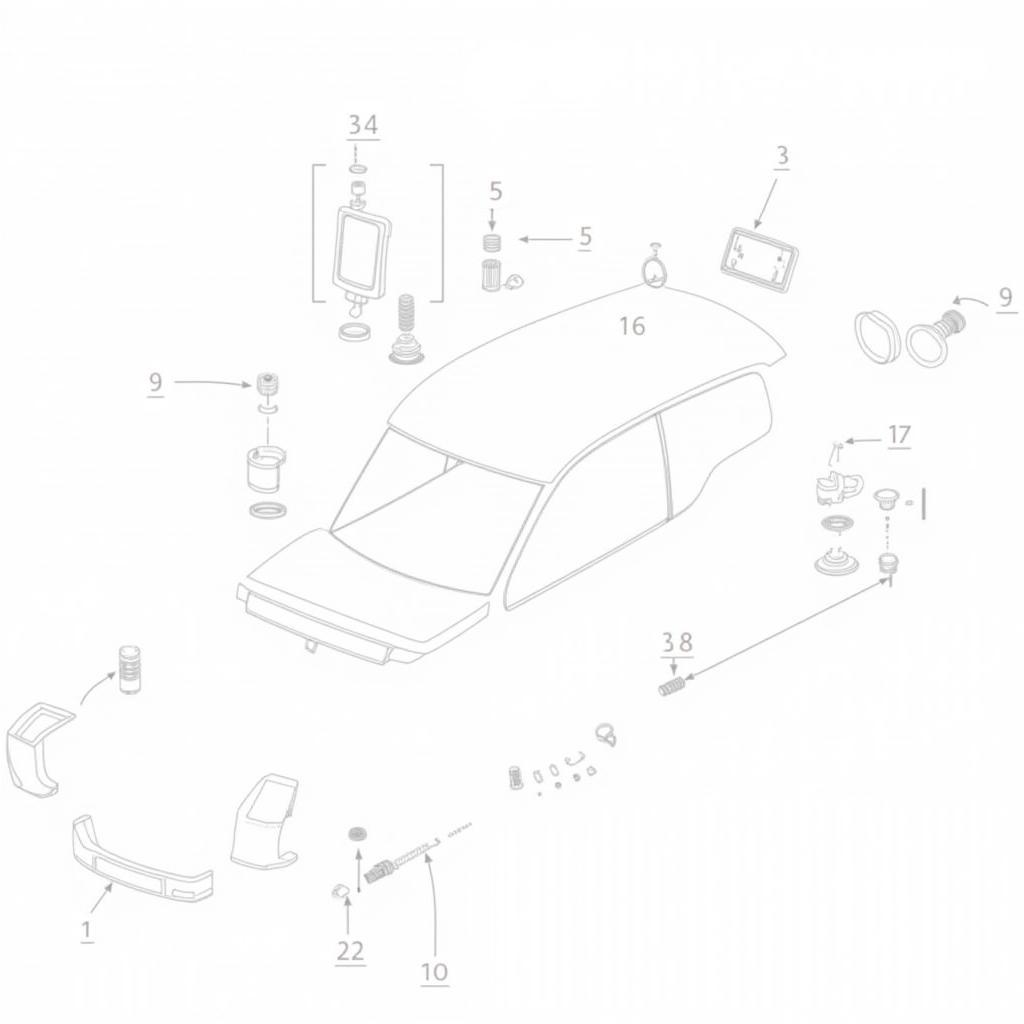The 2013 Mercedes C250 is a fantastic car, but like any vehicle, it can experience issues. One common problem owners face involves the stabilizer system, which can lead to a bumpy, uncomfortable ride and decreased handling. This guide explores the common stabilizer issues in a 2013 Mercedes C250 and how to fix them, ensuring your ride is as smooth and controlled as it should be. We’ll cover everything from diagnosis to DIY repairs and professional solutions.
Understanding the Stabilizer System in Your C250
The stabilizer system, also known as the anti-roll bar system, is crucial for maintaining stability and control during turns. It works by connecting the left and right wheels through a torsion bar, limiting body roll and keeping the car level. Key components include the stabilizer bar itself, bushings, and links. A malfunction in any of these parts can compromise the system’s effectiveness.
Common 2013 Mercedes C250 Stabilizer Problems
Several issues can arise with the stabilizer system in a 2013 C250. Worn bushings are a frequent culprit, causing a clunking or squeaking noise, especially over bumps. Broken or worn stabilizer links can also create similar noises and lead to excessive body roll. Less common but still possible are issues with the stabilizer bar itself, such as cracks or bends.
Diagnosing Stabilizer Issues: Is it a DIY Job?
Diagnosing the issue often starts with listening for unusual noises. A clunking or rattling sound, particularly when going over bumps or turning, often points to a stabilizer system problem. You can also visually inspect the bushings and links for signs of wear or damage. While some diagnostic steps can be DIY, a professional mechanic with specialized tools and experience can quickly pinpoint the exact problem.
How to Fix a 2013 Mercedes C250 Stabilizer: DIY vs. Professional
Depending on your mechanical skills and the specific issue, fixing a stabilizer problem can be a DIY project. Replacing bushings or links is relatively straightforward, requiring basic tools and readily available parts. However, if the stabilizer bar itself is damaged or you’re uncomfortable working on your car, it’s best to leave it to a professional. Incorrect installation can lead to further problems and compromise safety.
Preventing Future Stabilizer Issues
Regular maintenance is key to preventing stabilizer problems. Having your suspension system inspected during routine service appointments can catch potential issues early on. Avoiding driving over potholes and rough terrain can also prolong the life of your stabilizer components. Remember, a well-maintained stabilizer system ensures a comfortable and safe driving experience.
Costs Associated with Stabilizer Repairs
The cost of repairs can vary depending on the specific problem and whether you choose DIY or professional service. Bushings and links are relatively inexpensive, but labor costs can add up if you take your car to a mechanic. Replacing the entire stabilizer bar is a more significant expense. It’s always a good idea to get multiple quotes before proceeding with any repairs.
Conclusion: Keep Your C250 Handling Smoothly
Addressing stabilizer issues in your 2013 Mercedes C250 is essential for maintaining a comfortable and safe ride. Whether you choose a DIY approach or seek professional help, understanding the system and the potential problems can save you time and money in the long run. Don’t let a faulty stabilizer system detract from the enjoyment of driving your C250.
FAQ
- How often should I check my stabilizer system? It’s a good idea to have it inspected during regular maintenance, usually every 10,000-15,000 miles.
- Can I drive with a bad stabilizer link? While possible, it’s not recommended as it can compromise handling and safety.
- What tools do I need to replace stabilizer bushings? Basic hand tools like wrenches and sockets are usually sufficient.
- How can I tell if my stabilizer bar is bent? A visual inspection or a professional assessment can determine if the bar is damaged.
- Are aftermarket stabilizer parts okay to use? Yes, reputable aftermarket parts can be a cost-effective alternative to OEM parts.
- How long does it take to replace a stabilizer link? It’s typically a quick job, often taking less than an hour.
- What are the symptoms of a bad stabilizer bushing? Common symptoms include clunking or squeaking noises, especially when driving over bumps.
Situations and Questions
- Scenario: You hear a clunking noise from the front of your car when driving over bumps. Question: Could this be a stabilizer link issue?
- Scenario: Your car feels unstable when cornering. Question: Should I check the stabilizer bar and bushings?
- Scenario: You noticed a tear in your stabilizer bushing. Question: Do I need to replace the whole stabilizer system?
Related Articles and Further Reading
- Troubleshooting Mercedes C-Class Suspension Issues
- Understanding Your Car’s Suspension System
- DIY Car Repair: A Beginner’s Guide
Need help with your 2013 Mercedes C250 stabilizer system? Contact us via WhatsApp: +1 (641) 206-8880, Email: CARDIAGTECH[email protected] or visit us at 276 Reock St, City of Orange, NJ 07050, United States. We offer 24/7 customer support.

